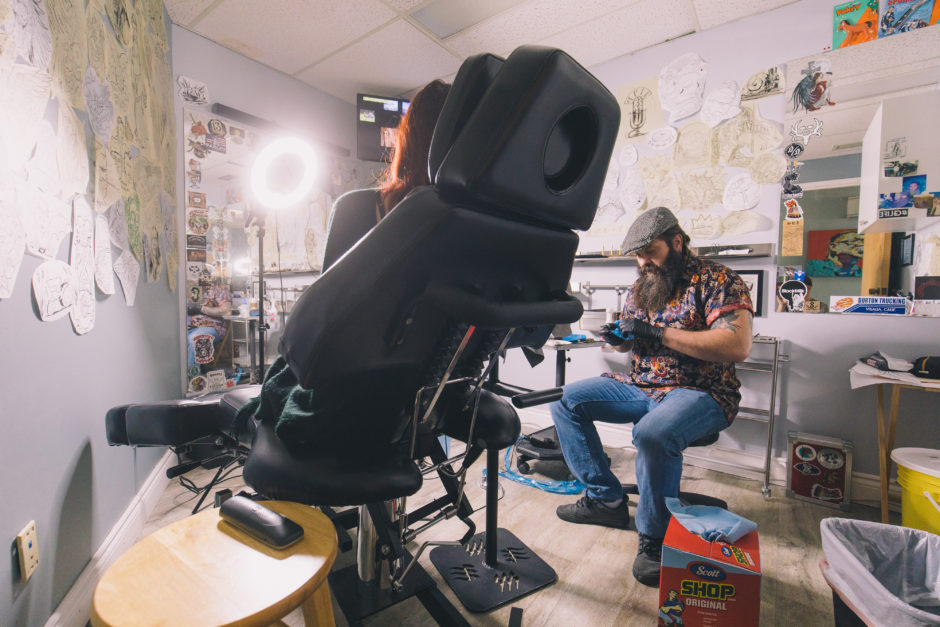'Tis the season for giving! That's why we're bringing back some of our favourite stories from 2019. This story was originally published on April 25. Enjoy!
Sixteen years ago in January, I first met my mentor, Bear Lamont, and began my career in tattooing. I was told it was a growing industry; the exact words “it is going to eat up your life” got thrown in a lot.
I didn’t realize what that actually meant.
I come from a lineage of tattoo knowledge that dates back generations in the industry; and it's a who’s who of people who are household names among aficionados of traditional tattoo culture.
Things were changing in the industry, and we were going to witness a shift. By the time I got into it, popular culture had already used tattoos for making characters in the movies and music seem edgy, and the regular people with whom these characters resonated began to approach tattoos with curiosity, which caused taboos to fade.
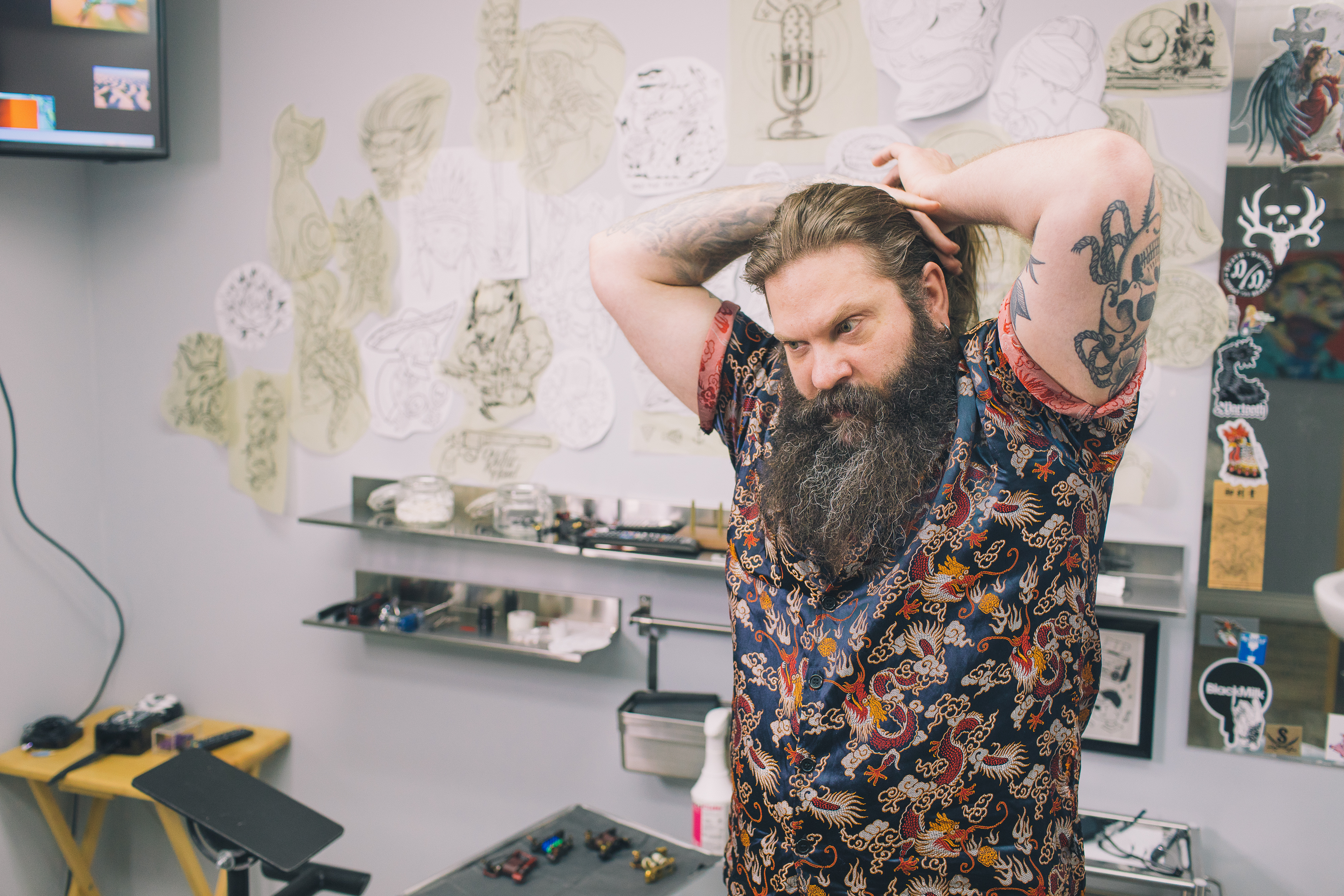
Within that first year, my bookings were well in advance of 18 months. There were half a dozen reputable shops in Edmonton at that time. And because the tattoo industry still regulated itself, that meant the ecosystem within the industry was thriving. Artists at these shops could barely keep up with demand, and tattoo supply companies, which had previously required some proof of expertise, began to look the other way in favour of profits.
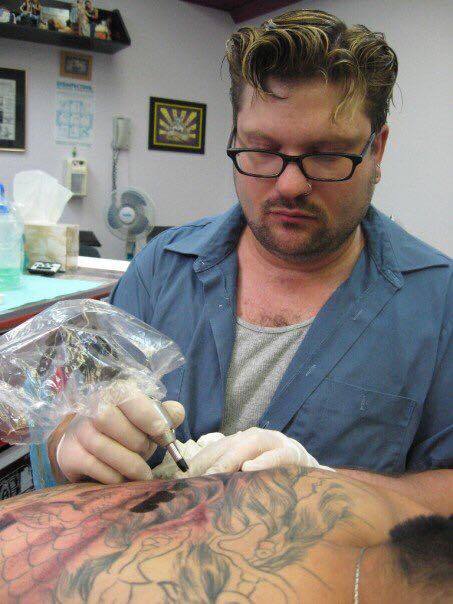
As the industry grew, so did the risks
The huge demand and short supply in the tattoo industry created fertile ground for impatient and under-trained artists. Although things continue to improve, it is still in this kind of state; and it's concerning to see the lack of training in the craft and the lack of understanding of the very real risks to people’s health that gets passed off as professional.
The upside is that these days, with disposable materials, increased quality of tools and access to online courses in blood-borne pathogens and communicable diseases, the ignorance on these matters really is a choice.
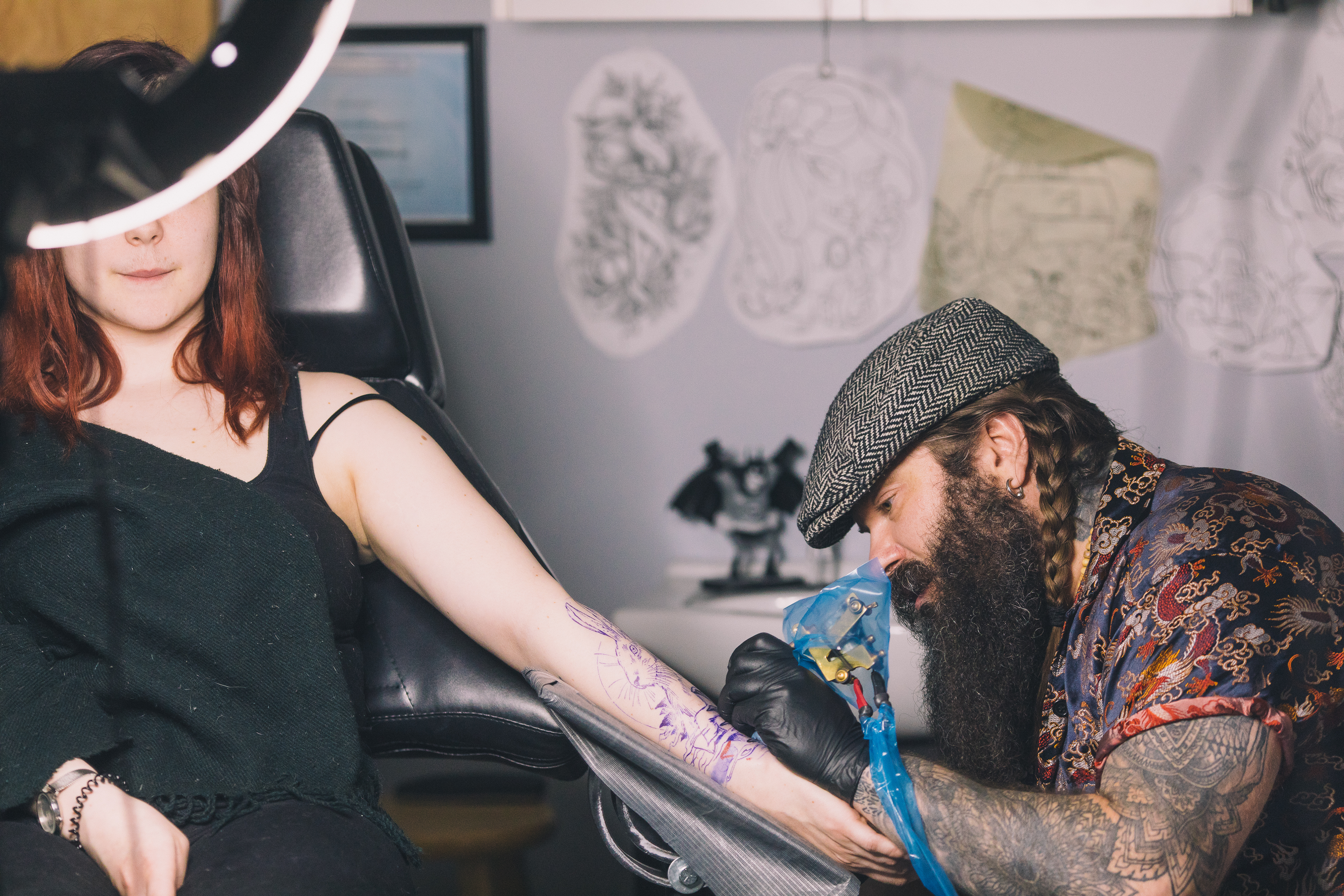
The outsider was embraced
In roughly my second year, something happened that stuck with me. I was having coffee at my sister’s house after dinner one Sunday, and on TV was a soap ad. There was a nude girl filmed from the back, sitting on a towel watching the sunrise. The person in the ad looked alien to me. I was baffled by it.
“Why does this look so weird?”
Well, shortly after, I realized that I wasn’t used to seeing any skin that wasn’t tattooed. The person in the advertisement had no tattoos. It seemed so odd to me.
It was around this time that tattoo TV shows started airing. It began with Ink’d, which gave way to Miami Ink, Best Ink, LA Ink, Inkmaster, Tattoo Nightmares, any number of regional tattoo programs. And I’m sure I missed a few.
These shows played into the instant gratification that has become the norm in today’s culture as a whole.
At the point that the shows began to air, the landscape really changed. The uninitiated began to come in, demanding the experiences people were getting on TV.
The TV shows broke down the taboos enough that people who had no experience or understanding of the process began to come in vast numbers. These programs helped the industry long term by educating people new to tattooing about the potential of what their tattoos could be; you don’t need a heart with ‘mom’ unless you want one. You can get a portrait of your mom indistinguishable from a photograph.
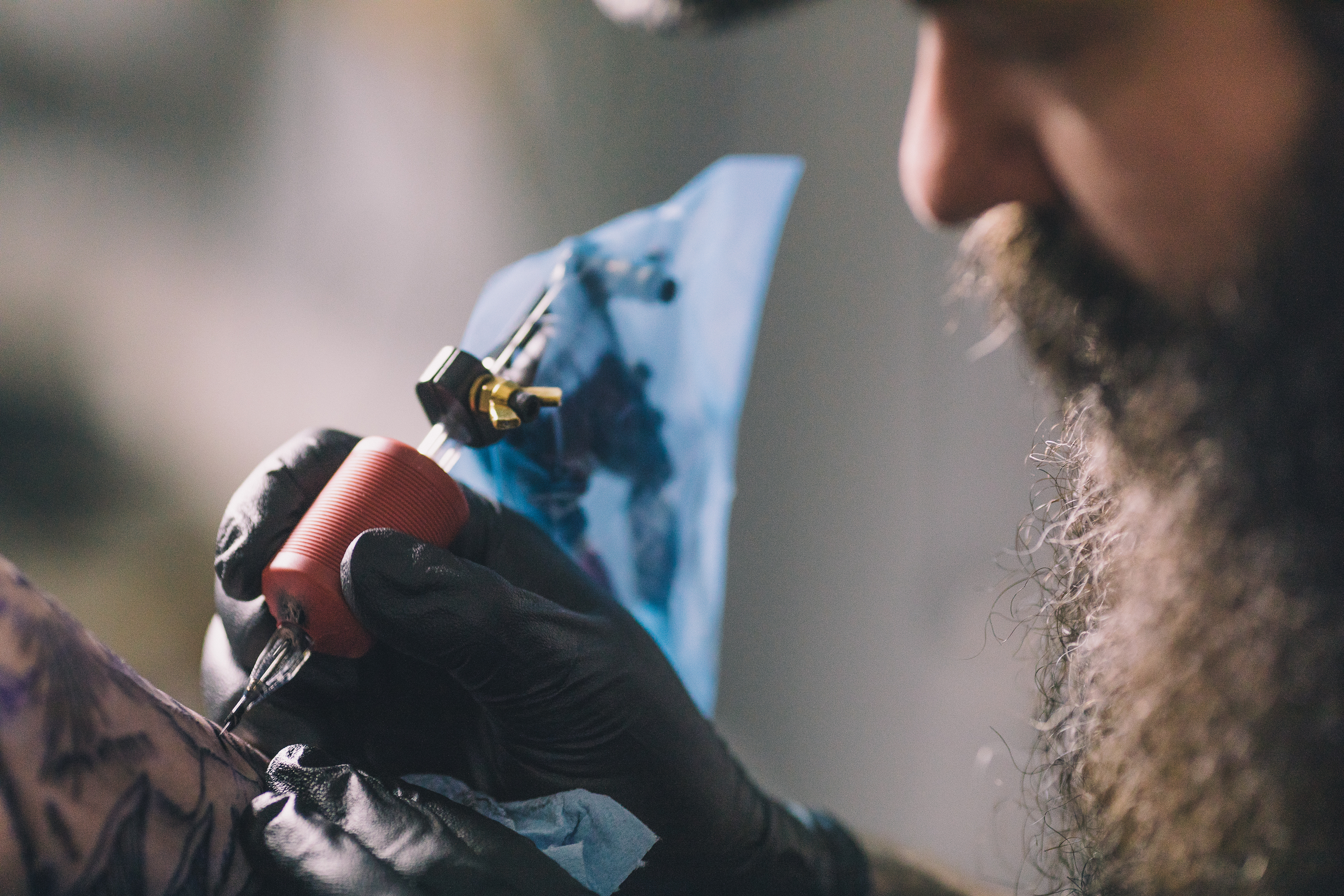
Every new client (tattoo virgin) felt compelled to tell a well-rehearsed story about the importance of their idea.
The worst of it was watching people come in who had never set foot in a shop use terminology directly taken from the judges on Inkmaster to criticize and challenge people who had been doing the job daily for decades (actual masters of the craft).
The shows also had an effect on the personnel of tattoo studios. A person would watch an artist roll in an hour and a half late, dramatically fall to pieces, fight with their co-workers or act like generally horrible people, then bang out a flawless tattoo in what looked like 15 minutes, followed by soaking up the adoration and money of the client. While all of this is smart production for making an entertaining ‘reality’ TV show, it also set a bad precedent for up-and-coming people in the industry.
I have had several interactions with people demanding their entitlement be recognized. From people I have known for years, to people I had never met.
I once had a character come into my shop.
“Are you Chris?”
I said yes.
“Cool. I’m gonna let you be the one who teaches me how to tattoo.”
Once I politely explained that there is a lot of sacrifice on the part of a potential apprentice — respect and dignity are a start — and that doesn’t begin to approach the cost in money, man hours, and sanity invested by a mentor — he abruptly said: “F--k you, man. We’ll see where you are in 10 years, when I’m backstage with David Navarro (host of Inkmaster) and buying and selling your ass!”
To which I said, “I can’t wait.”
And I’m still waiting.
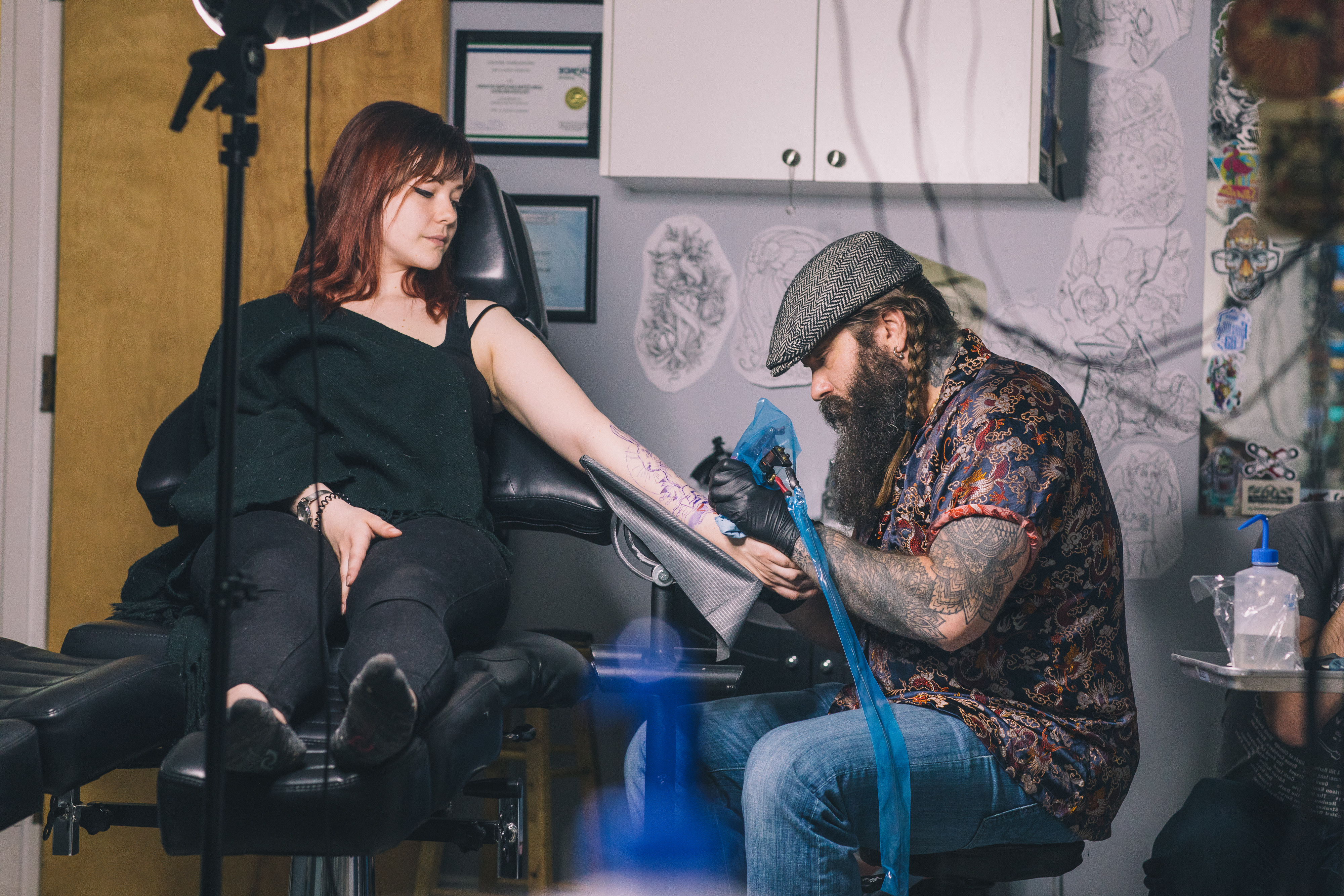
Increased popularity has made for a renaissance of sorts in the tattoo art, which I believe is a positive. Due to the access we have to amazing materials, equipment and technology there is almost no limit to what can be accomplished artistically. It is just a question of researching the artists and processes necessary to achieve your goals.
Through social media, we have access to the greatest artists of our time at the tips of our fingers. We can see hundreds of top-shelf tattoos before we’re even out of bed in the morning. Because of that, we get to see where the bar is set with regard to quality and creativity. This will push a motivated artist to continue improving.
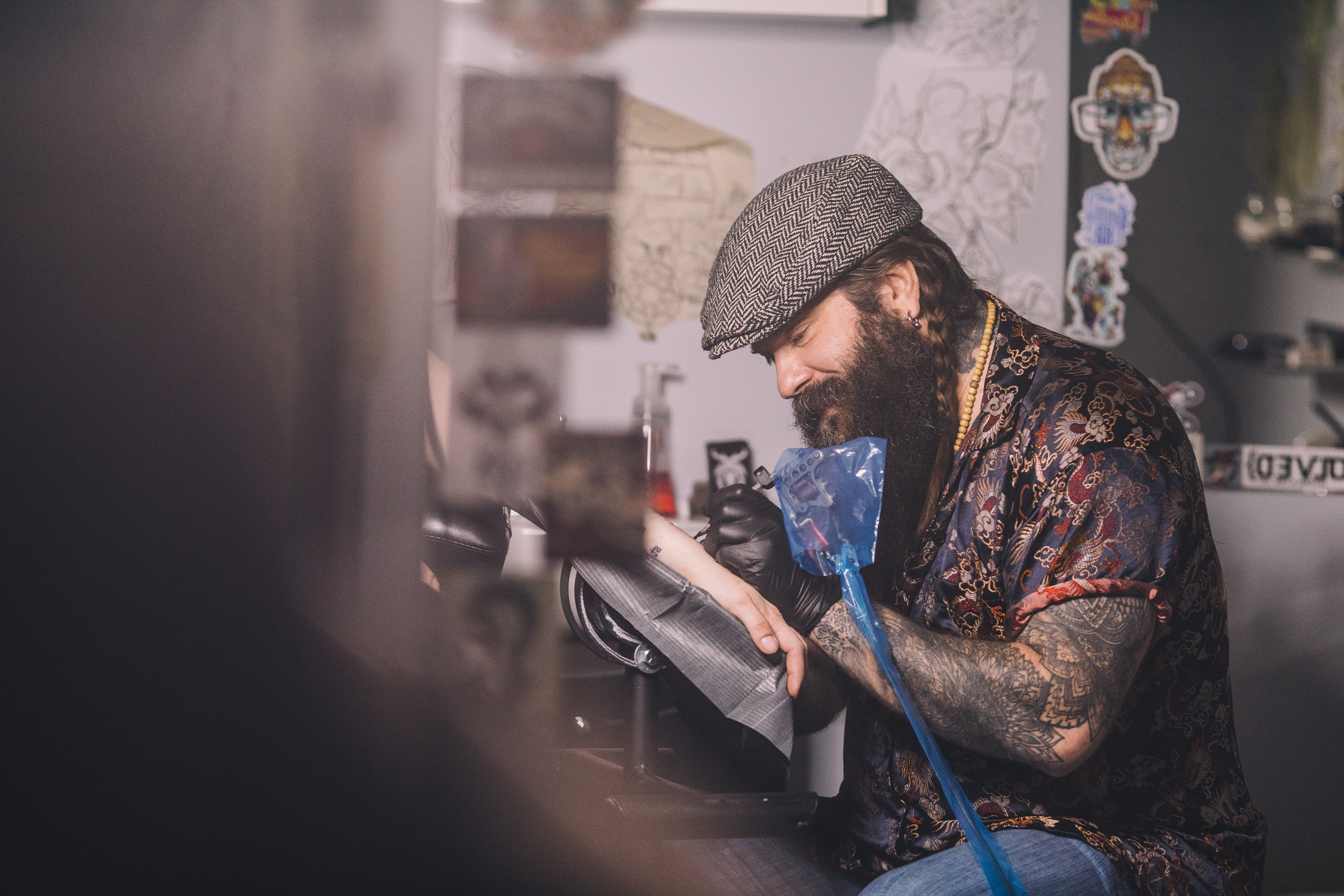
There are what we call functional tattoos (those with a very real purpose).
Aside from permanent makeup (eyeliner, lipliner, eyebrows etc.), there are what I call “reclamation pieces,” because people use them to reclaim their bodies from diseases like cancer (areola restoration) or to cover up scars, or even to alter certain body parts so an ex-lover or abuser may never recognize it again, should they ever see it. I’ve even heard of people relieving their eczema by tattooing salt water over the affected area.
If you are looking for something less visual and more conceptual, you can find it, and there are also people who specialize in the experience of altering the body.
The therapeutic effects of getting tattooed run from the physical through the psychological and emotional. Lots of experienced tattoo collectors will attest to the personal benefits.
Removal of tattoos is an essential part of the industry, as well. The old-school dermatologist removal systems have given way to a more tattoo-friendly approach. Where the dermatologist of yore refused to stop until the old tattoo was completely removed, the modern removal guys, in addition to that, may remove just what is required in order to cover up the old piece or remove a segment of it for the purposes of correction or integration into another piece. All this is comparatively more affordable and less painful than previous methods.
The future of tattooing is hard to pin down. There are starting to be conglomerates and mergers of companies as people jockey for control of the industry. There are artists who have numerous sponsors comparable to athletes or NASCAR drivers. There are negatives, like people who undercut the competition out of spite, or shop owners who trade and sell artists like baseball cards.
The tattoo industry continues to grow and change; but the human element will always be a consistent factor.
I believe that so long as the positive impact balances out the negative experiences, the industry will expand. With this we can expect to continue seeing better artwork and safer procedures, for the artists and collectors.
And quite possibly, with a little luck, more soap advertisements with tattooed skin.

